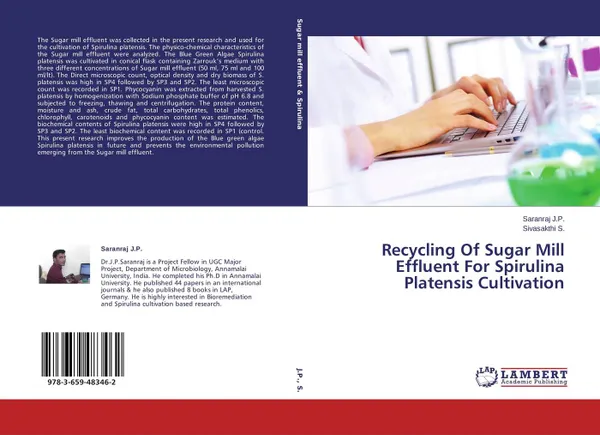Recycling Of Sugar Mill Effluent For Spirulina Platensis Cultivation
2013
Переплёт: Мягкая обложка, 128 страниц
Категория: Научная литература
Тираж: 500
📗 The Sugar mill effluent was collected in the present research and used for the cultivation of Spirulina platensis. The physico-chemical characteristics of the Sugar mill effluent were analyzed. The Blue Green Algae Spirulina platensis was cultivated in conical flask containing Zarrouk’s medium with three different concentrations of Sugar mill effluent (50 ml, 75 ml and 100 ml/lt). The Direct microscopic count, optical density and dry biomass of S. platensis was high in SP4 followed by SP3 and SP2. The least microscopic count was recorded in SP1. Phycocyanin was extracted from harvested S. platensis by homogenization with Sodium phosphate buffer of pH 6.8 and subjected to freezing, thawing and centrifugation. The protein content, moisture and ash, crude fat, total carbohydrates, total phenolics, chlorophyll, carotenoids and phycocyanin content was estimated. The biochemical contents of Spirulina platensis were high in SP4 followed by SP3 and SP2. The least biochemical content was recorded in SP1 (control. This present research improves the production of the Blue green algae Spirulina platensis in future and prevents the environmental pollution emerging from the Sugar mill effluent.
Мнения
